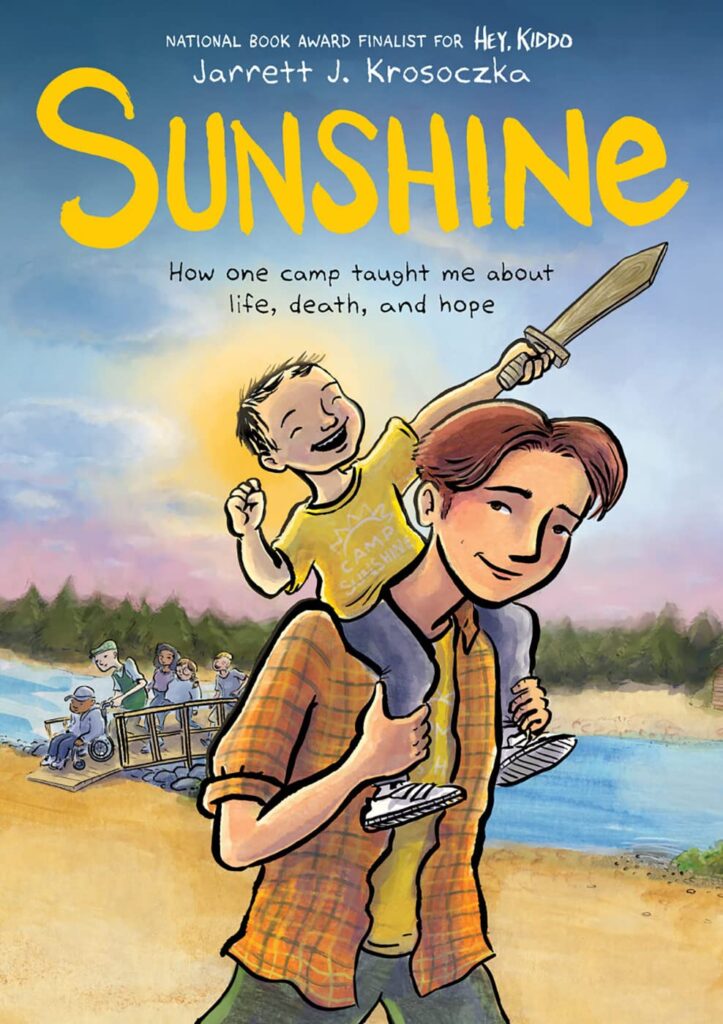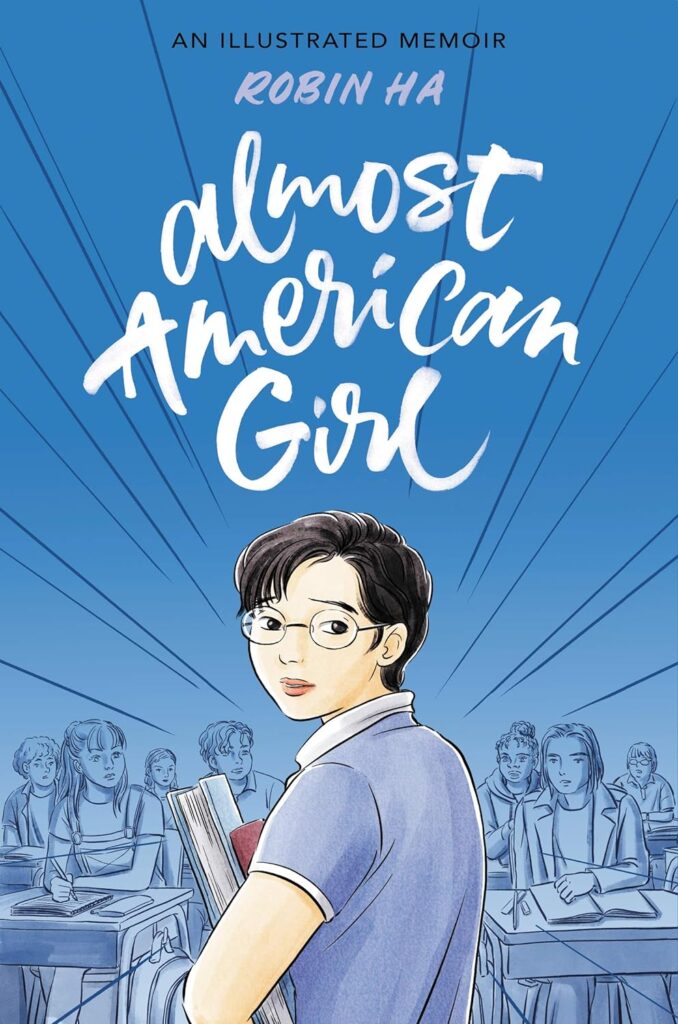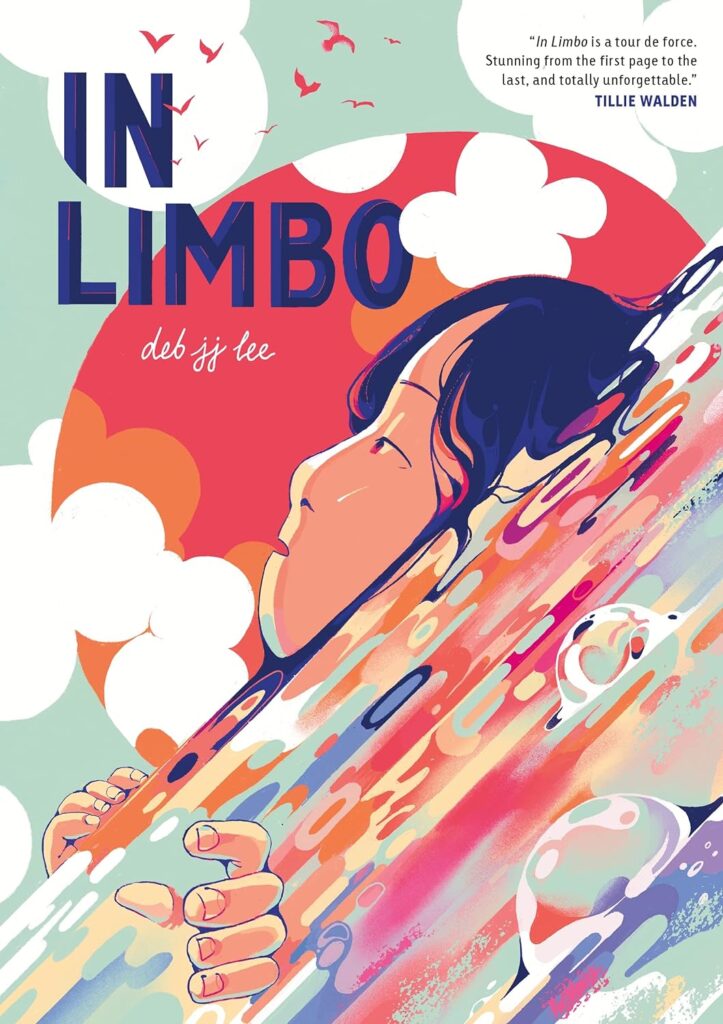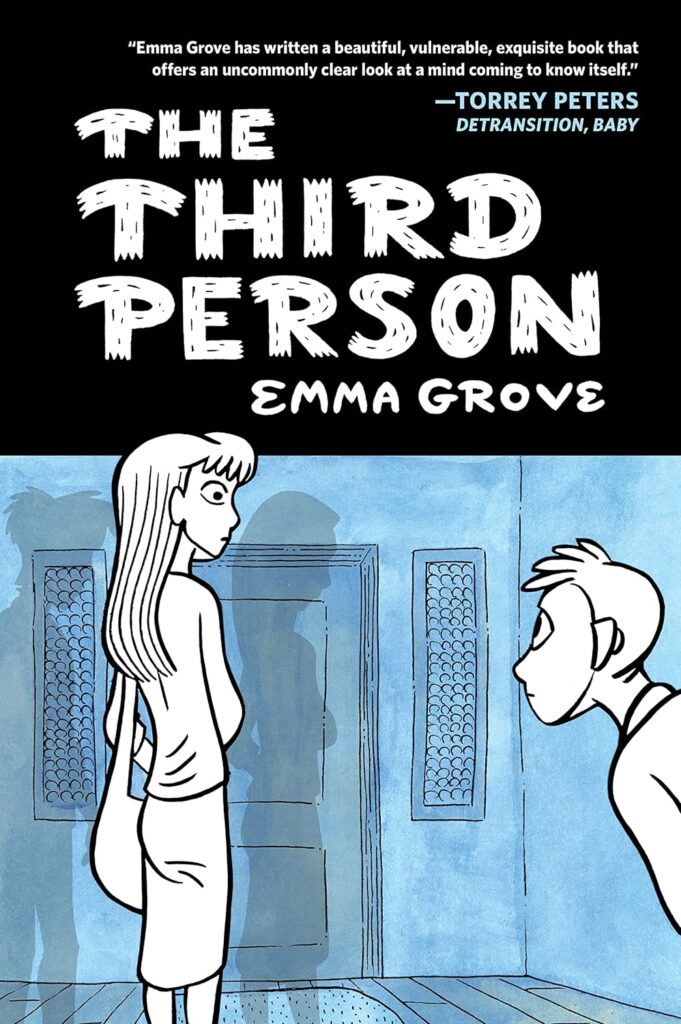 Memoir allows readers a glimpse into the lives of others, the struggles they’ve gone through, the lessons they’ve learned, showing the width and breadth of the human experience. And with the added visual element, graphic memoir brings another dimension to the story and pulls the reader into the setting without the need for prose description, visually transporting readers to lands and perspectives different from their own. The prose lays out the storyline, and the illustration provides the details, allowing for a different kind of comprehension. Memoir feels especially suited to the graphic novel format. These are the stories of real people unfolding before your eyes. The visuals help with understanding differences, but they can also make similarities more striking too. Maybe you’ll learn something new; maybe you’ll find a bit of yourself in the story. Each reading experience is important and powerful.
Memoir allows readers a glimpse into the lives of others, the struggles they’ve gone through, the lessons they’ve learned, showing the width and breadth of the human experience. And with the added visual element, graphic memoir brings another dimension to the story and pulls the reader into the setting without the need for prose description, visually transporting readers to lands and perspectives different from their own. The prose lays out the storyline, and the illustration provides the details, allowing for a different kind of comprehension. Memoir feels especially suited to the graphic novel format. These are the stories of real people unfolding before your eyes. The visuals help with understanding differences, but they can also make similarities more striking too. Maybe you’ll learn something new; maybe you’ll find a bit of yourself in the story. Each reading experience is important and powerful.
No matter your age or experience, graphic memoirs are accessible and valuable for all. Interested in trying graphic memoir? Showcasing a variety of different art styles, here are some more recent releases I recommend.

Ducks: Two Years in the Oil Sands by Kate Beaton
Before there was Kate Beaton, New York Times bestselling cartoonist of Hark A Vagrant fame, there was Katie Beaton of the Cape Breton Beatons, specifically Mabou, a tight-knit seaside community where the lobster is as abundant as beaches, fiddles, and Gaelic folk songs. After university, Beaton heads out west to take advantage of Alberta’s oil rush, part of the long tradition of East Coasters who seek gainful employment elsewhere when they can’t find it in the homeland they love so much. With the singular goal of paying off her student loans, what the journey will actually cost Beaton will be far more than she anticipates.
Arriving in Fort McMurray, Beaton finds work in the lucrative camps owned and operated by the world’s largest oil companies. Being one of the few women among thousands of men, the culture shock is palpable. It does not hit home until she moves to a spartan, isolated worksite for higher pay. She encounters the harsh reality of life in the oil sands where trauma is an everyday occurrence yet never discussed. Her wounds may never heal.
Beaton’s natural cartooning prowess is on full display as she draws colossal machinery and mammoth vehicles set against a sublime Albertan backdrop of wildlife, Northern Lights, and Rocky Mountains. Her first full-length graphic narrative, Ducks: Two Years in the Oil Sands is an untold story of Canada: a country that prides itself on its egalitarian ethos and natural beauty while simultaneously exploiting both the riches of its land and the humanity of its people.

Sunshine by Jarrett Krosoczka
When Jarrett J. Krosoczka was in high school, he was part of a program that sent students to be counselors at a camp for seriously ill kids and their families. Going into, Jarrett was worried: Wouldn’t it be depressing, to be around kids facing such a serious struggle? Wouldn’t it be grim?
But instead of the shadow of death, Jarrett found something else at Camp Sunshine: the hope and determination that gets people through the most troubled of times. Not only was he subject to some of the usual rituals that come with being a camp counselor (wilderness challenges, spooky campfire stories, an extremely stinky mascot costume), but he also got a chance to meet some extraordinary kids facing extraordinary circumstances. He learned about the captivity of illness, for sure . . . but he also learned about the freedom a safe space can bring.
Now, in his follow-up to the National Book Award finalist Hey, Kiddo, Jarrett brings readers back to Camp Sunshine so we can meet the campers and fellow counselors who changed the course of his life.

Almost American Girl by Robin Ha
For as long as she can remember, it’s been Robin and her mom against the world. Growing up in the 1990s as the only child of a single mother in Seoul, Korea, wasn’t always easy, but it has bonded them fiercely together.
So when a vacation to visit friends in Huntsville, Alabama, unexpectedly becomes a permanent relocation—following her mother’s announcement that she’s getting married—Robin is devastated. Overnight, her life changes. She is dropped into a new school where she doesn’t understand the language and struggles to keep up. She is completely cut off from her friends at home and has no access to her beloved comics. At home, she doesn’t fit in with her new stepfamily. And worst of all, she is furious with the one person she is closest to—her mother.
Then one day Robin’s mother enrolls her in a local comic drawing class, which opens the window to a future Robin could never have imagined.

In Limbo by Deb JJ Lee
Deborah (Jung-Jin) Lee knows she’s different. Ever since her family emigrated from South Korea to the United States, she’s felt her Otherness. For a while, her English isn’t perfect. None of her teachers can pronounce her Korean name. Her face and her eyes—especially her eyes—stand out. As the pressures of high school ramp up, friendships change and end, and everything gets harder. Even home isn’t a safe place, as fights with her mom escalate. Deb is caught in a limbo, with nowhere to go, and her mental health plummets.
But Deb is resilient. She discovers art and self-care, and gradually begins to start recovering. And during a return trip to South Korea, she realizes something that changes her perspective on her family, her heritage, and herself.
This stunning debut graphic memoir features page after page of gorgeous, evocative art, perfect for Tillie Walden fans. It’s a cross section of the Korean-American diaspora and mental health, a moving and powerful read in the vein of Hey, Kiddo and The Best We Could Do.

The Third Person by Emma Grove
In the winter of 2004, a shy woman named Emma sits in Toby’s office. She wants to share this wonderful new book she’s reading, but Toby, her therapist, is concerned with other things. Emma is transgender, and has sought out Toby for approval for hormone replacement therapy. Emma has shown up at the therapy sessions as an outgoing, confident young woman named Katina, and a depressed, submissive workaholic named Ed. She has little or no memory of her actions when presenting as these other two people. And then Toby asks about her childhood…
As the story unfolds, we discover clues to Emma’s troubled past and how and why these other two people may have come into existence. As Toby juggles treating three separate people, each with their own unique personalities and memories, he begins to wonder if Emma is merely acting out to get attention, or if she actually has Dissociative Identity Disorder. Is she just a troubled woman in need of help? And is “the third person” in her brain protecting her, or derailing her chances of ever finding peace?
The Third Person is a riveting memoir from newcomer Emma Grove. Drawn in thick, emotive lines, with the refined style of a comics vet, Grove has created a singular, gripping depiction of the intersection of identities and trauma. The Third Person is a testament to the importance of having the space to heal and live authentically.
